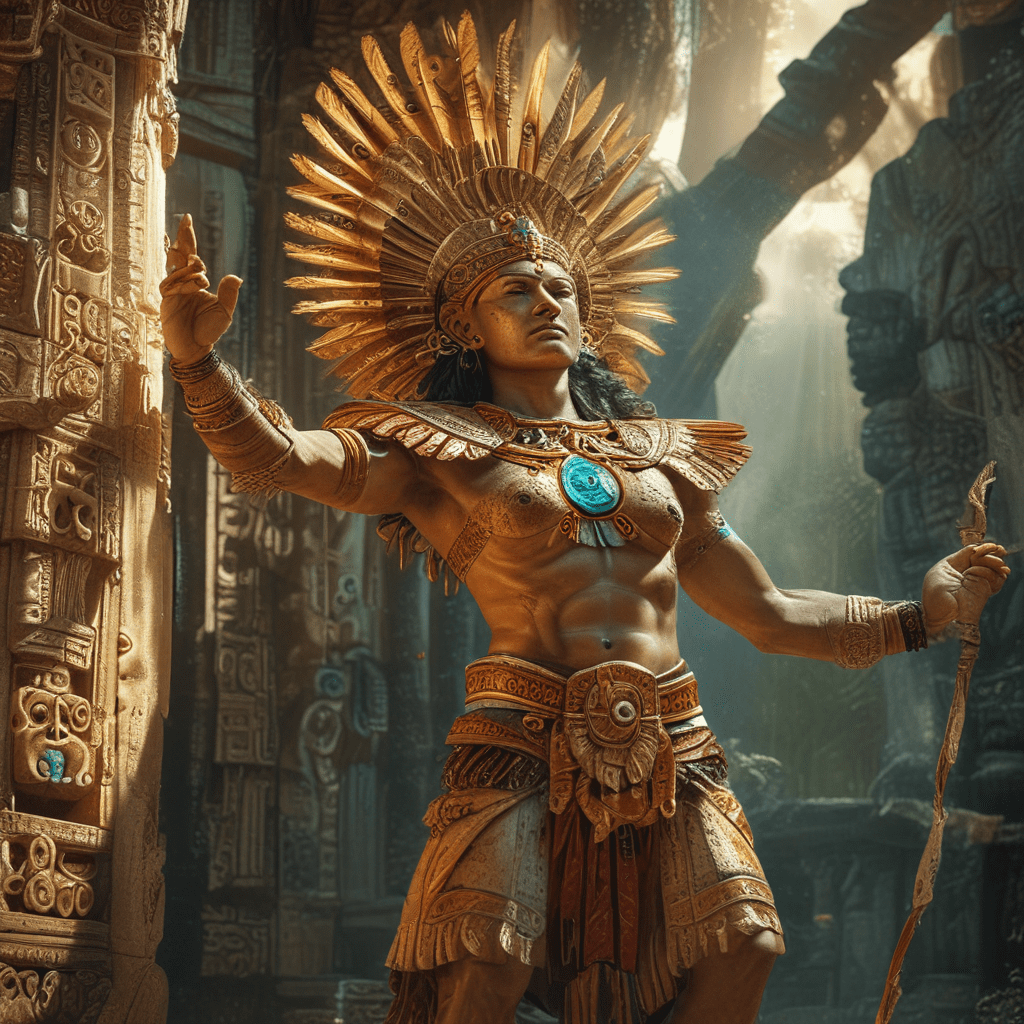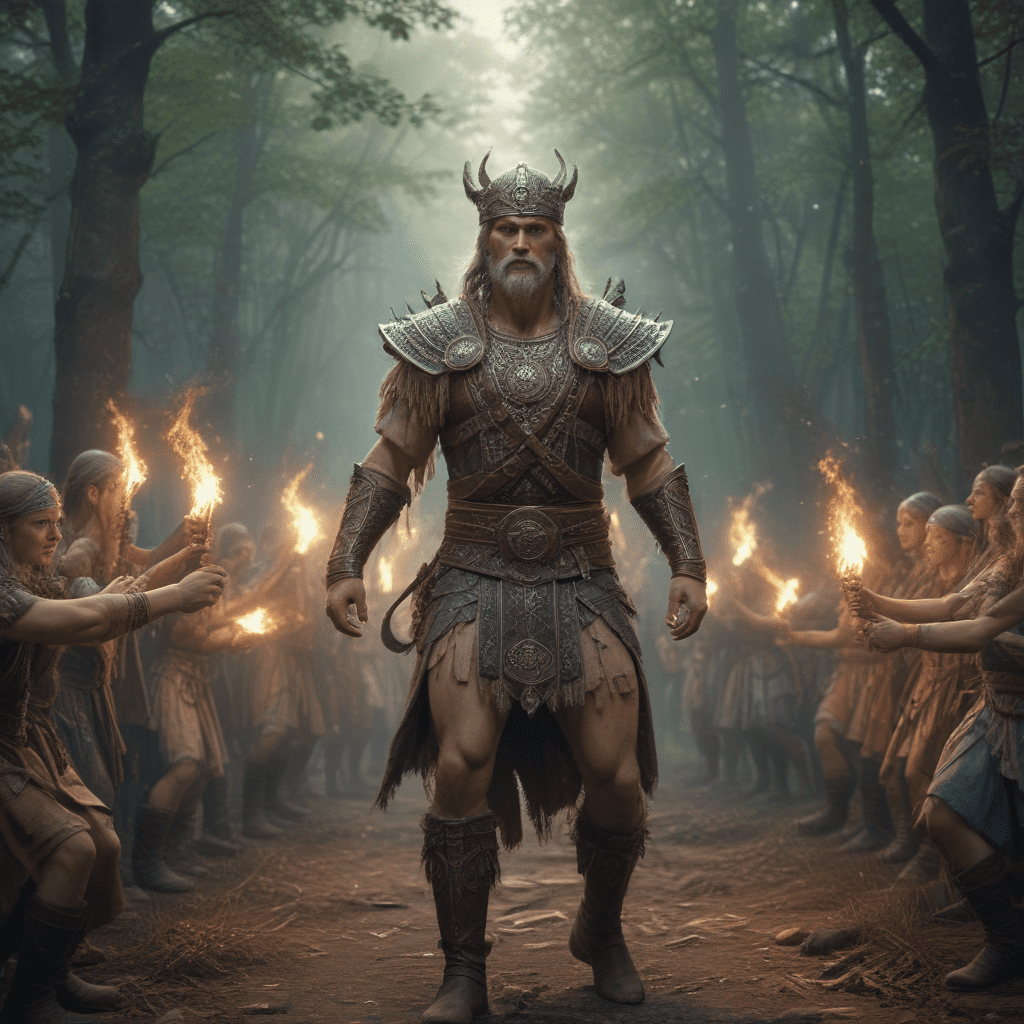The Importance of Kinich Ahau in Mayan Culture
The ancient Maya civilization held a profound fascination with the celestial realm, particularly the sun, which they believed held the power to sustain life, influence harvests, and dictate the course of their existence. Among the myriad deities in the Mayan pantheon, Kinich Ahau, the sun god, occupied a central position, revered as the embodiment of the celestial orb and its life-giving properties. This article delves into the fascinating mythology surrounding Kinich Ahau, exploring his role in creation, sustenance, and the underworld journey, shedding light on his multifaceted nature as both a benevolent provider and a fearsome deity capable of inflicting drought and disease. Additionally, we will investigate the astronomical, symbolic, and ritualistic interpretations of Kinich Ahau, revealing his enduring impact on Mayan civilization.
Theories on Kinich Ahau: Symbolism and Interpretations
The myth of Kinich Ahau has been the subject of extensive scholarly analysis, with interpretations ranging from astronomical to symbolic.
Astronomical Interpretations: Researchers have analyzed the myth through the lens of astronomy, recognizing the alignment of Kinich Ahau's journey with the actual movement of the sun across the sky. The zenith, for instance, is often associated with the deity's midday position, while the underworld journey represents the sun's descent into the night.
Symbolic Interpretations: Beyond the literal, scholars have explored the deeper symbolism embedded within the myth. Kinich Ahau's daily journey can be seen as a metaphor for the cycle of life, death, and rebirth, mirroring the growth and decay of vegetation and the changing seasons. His association with celestial bodies like Venus and the Pleiades suggests a connection to fertility and the cyclical nature of time.
Evolution of the Myth: The Kinich Ahau myth likely evolved over time, influenced by cultural exchanges and astronomical observations. Early depictions portray him as a simple sun disk, while later representations depict him as an adorned figure with elaborate headdresses and jaguar features. This evolution reflects the growing complexity of Mayan religious beliefs and the increasing importance of the sun god in their cosmology.
Kinich Ahau in Ritual and Art: Expressions of Devotion
The reverence for Kinich Ahau manifested in various ritual practices and artistic expressions.
Ritual Offerings: The Maya offered sacrifices to Kinich Ahau, including bloodletting, incense burning, and the dedication of precious objects. These offerings aimed to appease the deity, ensure his continued favor, and guarantee bountiful harvests and prosperity.
Artistic Depictions: Kinich Ahau's image appears prominently in Mayan art and architecture. Murals, sculptures, and ceramics depict him as a radiant figure, often adorned with jade ornaments and jaguar pelts. These representations served as visual reminders of the sun god's presence and power, reinforcing his central role in Mayan life.
Significance of Representations: These artistic and ritualistic expressions offer valuable insights into the Mayan worldview. They reveal the deep respect and awe with which the Maya regarded Kinich Ahau, reflecting their belief in his influence over their daily lives and the fate of their civilization.
Legacy of Kinich Ahau: Influence on Mayan Civilization
The legacy of Kinich Ahau extends far beyond the realm of mythology, leaving an indelible mark on Mayan civilization.
Impact on the Calendar: The Mayan calendar, with its intricate cycles and emphasis on astronomical events, reflects the profound influence of Kinich Ahau. The 260-day Tzolkin calendar aligns with the synodic period of Venus, a planet closely associated with the sun god.
Impact on Cosmology: Kinich Ahau served as the central figure in Mayan cosmology, anchoring their understanding of the universe. His daily journey mirrored the movement of celestial bodies, shaping their perception of time and space.
Impact on Social Structure: The veneration of Kinich Ahau extended to the social and political spheres. The ruling elite claimed descent from the sun god, legitimizing their authority and reinforcing their connection to the divine.
Continued Relevance: The reverence for Kinich Ahau continues among modern Mayan communities, evident in traditional ceremonies, oral narratives, and artistic expressions. His enduring legacy serves as a testament to the profound impact of the sun god on Mayan culture and its lasting influence on contemporary beliefs and practices.
Conclusion: The Enduring Power of the Sun God
The myth of Kinich Ahau offers a captivating glimpse into the intricate beliefs and practices of the ancient Maya. As the embodiment of the sun, he held a central position in their cosmology, influencing their rituals, art, and social structure. His enduring legacy continues to inspire and fascinate, reminding us of the profound connection between humanity and the celestial forces that have shaped our understanding of the world.
FAQ
What are the main attributes of Kinich Ahau?
Kinich Ahau is often depicted with a radiant face, adorned with jade ornaments and jaguar features. He carries a scepter and a shield, symbolizing his power and authority.
What is the significance of Kinich Ahau's journey through the underworld?
The underworld journey represents the sun's descent into the night and its symbolic death and rebirth. This cycle mirrors the natural rhythm of life and death and reinforces the belief in the sun's power to sustain life.
How did the Maya express their devotion to Kinich Ahau?
The Maya engaged in various rituals and offerings to appease Kinich Ahau, including bloodletting, incense burning, and the dedication of precious objects. They also created elaborate artistic representations of the sun god, showcasing their deep reverence and belief in his power.



